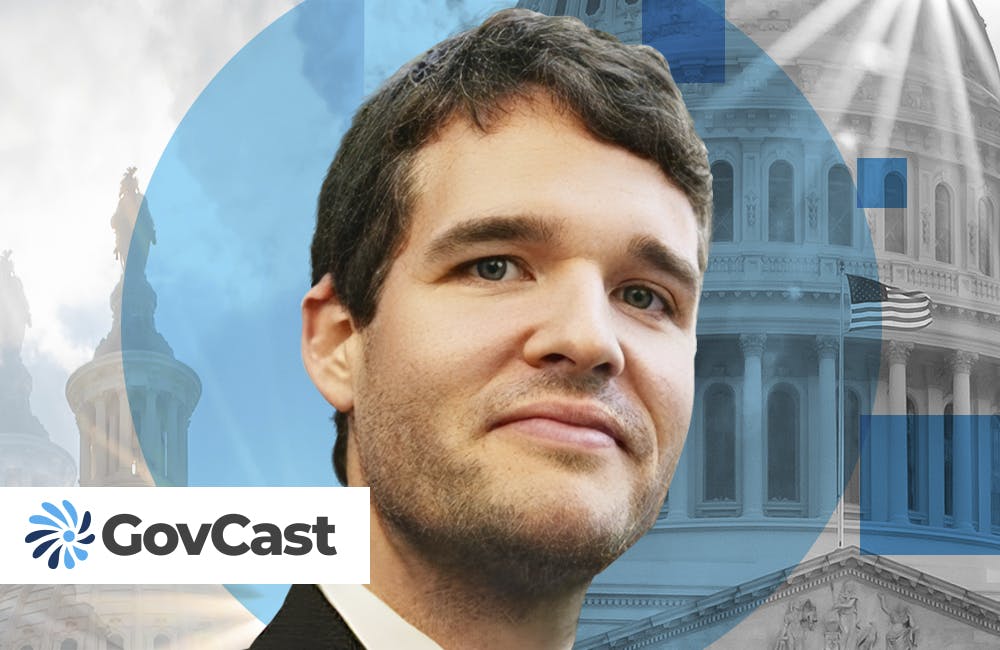Federal AI Best Practices Require Getting a Handle on Data
Data management and skilling the workforce are part of a multi-pronged approach to AI.

As federal departments work their way to optimize data usage and create artificial intelligence-driven applications, officials discussed best practices in these technological areas to fuel their agencies’ missions at Wednesday’s AFCEA February Breakfast.
The Patents and Trademarks Office and Department of Homeland Security in particular are approaching the technology to improve procurement and patents approvals to reduce manual and time-consuming processes.
“It’s extremely difficult for contracting officers to get the information they need from the contracting performance assessments and reporting system,” said DHS Office of the Chief Technology Officer Technical Engineering Portfolio Manager William Groom regarding procurement. “It’s a very monotonous type of job in the sense that [you] have to download individual files one by one.”
Groom added that DHS is working on nine pilot solutions that will scan and bring up the most relevant information for its procurement officers, reducing monotonous work time for the workforce to review information in the systems they work with.
USPTO is attempting to also reduce low-value work with AI, said Application Engineering and Development Director Stephan Mitchev. For instance, the agency is trying to apply AI to conduct activities like image analysis across documents in the patents system, giving experts who work with patents the information they need much faster than they could on their own.
Creating AI solutions takes a significant amount of collaboration across agency components and a focus on skilling departments’ personnel properly in data and other technological areas. DHS’s Office of Procurement Operations has developed a procurement innovation lab, which has formed a partnership across various parts of the DHS enterprise to achieve the Agile, automated solutions the office seeks, Grooms said.
Meanwhile, DHS’s CIO office has emphasized training so that more personnel are able to have basic information to understand and help work on AI across the enterprise.
While DHS is working in house to skill its workforce to be ready for AI, the Census Bureau is seeking a cross-agency collaborative approach to seek the same goal. The agency is working with the Office of Management and Budget to create a job series focused on AI, said Census Bureau Chief Data Officer Zachary Whitman. He also highlighted a pilot program his office launched to train statisticians in data science.
On the technological end of improving the path toward leveraging data and AI solutions, Whitman and Mitchev said they believe an open-source and cloud-agnostic approach is key.
“I am a huge proponent of open source,” Whitman said. “I think government work means it’s public, and I think that our opportunity here is to not only leverage the current level of resources available. … My perspective is to be cloud-agnostic, flexible within your implementation.”
In terms of working with the data itself, Whitman highlighted that he and his office take an incremental approach to cleansing data. His organization has vast differentiations in data standards, so he said that the only way he can cleanse data effectively is to collaborate with different parts of the enterprise in an incremental fashion. Through this work, Whitman said he hopes to eventually harmonize the agency’s metadata.
This is a carousel with manually rotating slides. Use Next and Previous buttons to navigate or jump to a slide with the slide dots
-

IRS CX Efforts Come With a New Acquisition Office
The agency is using Inflation Reduction Act funds to transform the taxpayer experience through digital tools and technology.
3m read -

How Health Care Leaders Should Plan for Building Cyber Resiliency
Policy leaders recommend health care organizations implement tools like encryption and multi-factor authentication to protect their data.
4m read -

HHS Aligns AI, Tech Strategy Under its Policy Agency
ONC will have a new name and oversee more c-suites to better shape the future of health care technology policy.
3m read -

Inside VA’s Lighthouse for App Development
Andrew Fichter discusses how Lighthouse is serving veterans and why it is necessary for modernization of veterans services.
24m listen








